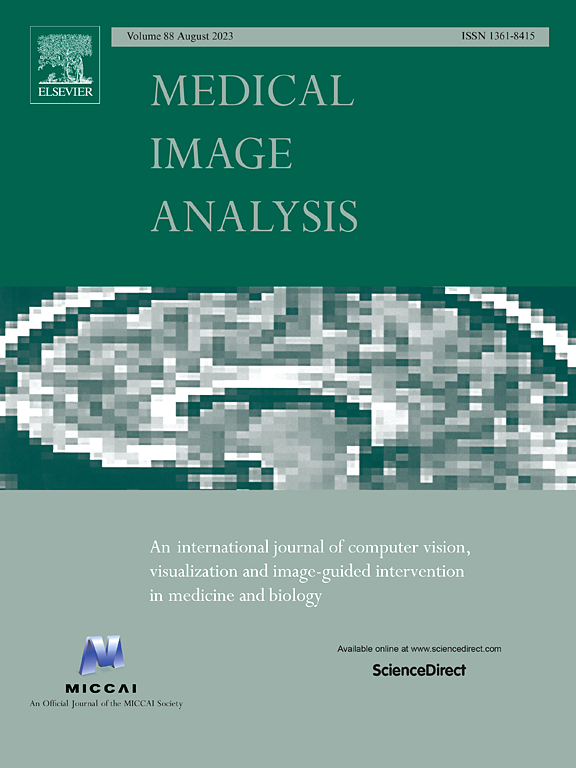Second order kinematic surface fitting in anatomical structures
IF 10.7
1区 医学
Q1 COMPUTER SCIENCE, ARTIFICIAL INTELLIGENCE
引用次数: 0
Abstract
Symmetry detection and morphological classification of anatomical structures play pivotal roles in medical image analysis. The application of kinematic surface fitting, a method for characterizing shapes through parametric stationary velocity fields, has shown promising results in computer vision and computer-aided design. However, existing research has predominantly focused on first order rotational velocity fields, which may not adequately capture the intricate curved and twisted nature of anatomical structures. To address this limitation, we propose an innovative approach utilizing a second order velocity field for kinematic surface fitting. This advancement accommodates higher rotational shape complexity and improves the accuracy of symmetry detection in anatomical structures. We introduce a robust fitting technique and validate its performance through testing on synthetic shapes and real anatomical structures. Our method not only enables the detection of curved rotational symmetries (core lines) but also facilitates morphological classification by deriving intrinsic shape parameters related to curvature and torsion. We illustrate the usefulness of our technique by categorizing the shape of human cochleae in terms of the intrinsic velocity field parameters. The results showcase the potential of our method as a valuable tool for medical image analysis, contributing to the assessment of complex anatomical shapes.
解剖结构的二阶运动学曲面拟合
解剖结构的对称检测和形态分类在医学图像分析中起着至关重要的作用。运动学曲面拟合是一种通过参数化静止速度场来表征形状的方法,在计算机视觉和计算机辅助设计方面的应用显示出良好的效果。然而,现有的研究主要集中在一阶旋转速度场,可能无法充分捕捉解剖结构复杂的弯曲和扭曲性质。为了解决这一限制,我们提出了一种利用二阶速度场进行运动学曲面拟合的创新方法。这一进步适应了更高的旋转形状复杂性,提高了解剖结构对称性检测的准确性。我们介绍了一种鲁棒拟合技术,并通过对合成形状和真实解剖结构的测试来验证其性能。我们的方法不仅可以检测弯曲的旋转对称(核心线),而且可以通过导出与曲率和扭转相关的固有形状参数来促进形态分类。我们通过对人类耳蜗形状的固有速度场参数进行分类来说明我们技术的实用性。结果显示了我们的方法作为医学图像分析的宝贵工具的潜力,有助于评估复杂的解剖形状。
本文章由计算机程序翻译,如有差异,请以英文原文为准。
求助全文
约1分钟内获得全文
求助全文
来源期刊

Medical image analysis
工程技术-工程:生物医学
CiteScore
22.10
自引率
6.40%
发文量
309
审稿时长
6.6 months
期刊介绍:
Medical Image Analysis serves as a platform for sharing new research findings in the realm of medical and biological image analysis, with a focus on applications of computer vision, virtual reality, and robotics to biomedical imaging challenges. The journal prioritizes the publication of high-quality, original papers contributing to the fundamental science of processing, analyzing, and utilizing medical and biological images. It welcomes approaches utilizing biomedical image datasets across all spatial scales, from molecular/cellular imaging to tissue/organ imaging.
 求助内容:
求助内容: 应助结果提醒方式:
应助结果提醒方式:


